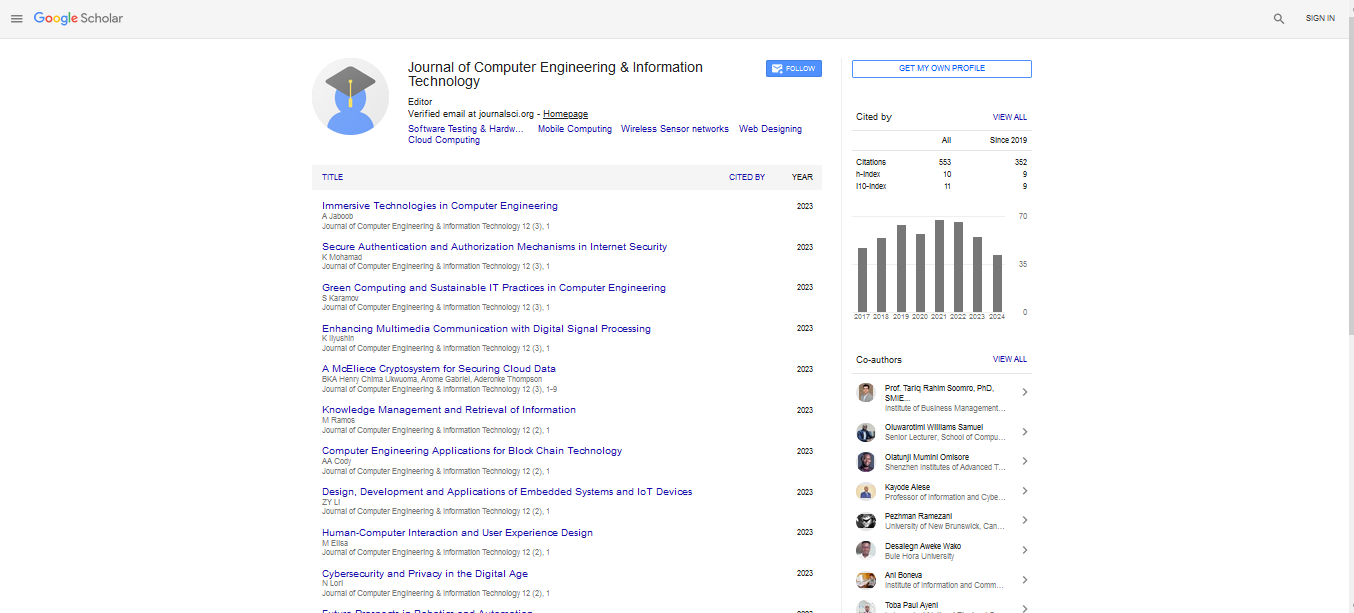Research Article, J Comput Eng Inf Technol Vol: 2 Issue: 2
Image Steganography Based on Wavelet Families
| Sushil Kumar1* and S. K. Muttoo2 | |
| 1Department of Mathematics, Rajdhani College, University of Delhi, New Delhi, India | |
| 2Department of Computer Science, University of Delhi, Delhi, India | |
| Corresponding author : Sushil Kumar Department of Mathematics, Rajdhani College, University of Delhi, New Delhi, India Tel: +91-1125930752 ; Fax: +91-11-25116988 E-mail: skazad@rajdhani.du.ac.in |
|
| Received: February 15, 2013 Accepted: March 29, 2013 Published: April 23, 2013 | |
| Citation: Kumar S, Muttoo SK (2013) Image Steganography Based on Wavelet Families. J Comput Eng Inf Technol 2:2. doi:10.4172/2324-9307.1000105 |
Abstract
Image Steganography Based on Wavelet Families
Wavelet transforms are considered to be an ideal domain for image compression and transmission. The new generation still image compression standard JPEG2000 uses the bi-orthogonal CDF 5/3 wavelet (also called the CDF (2, 2) wavelet) for lossless compression and a CDF 9/7 wavelet for lossy compression. There are several known wavelet families such as Daubechies, Coiflet, Symlet, CDF, etc. The problem of selecting a suitable wavelet for signal and image processing has always challenged the researchers. The conventional wavelet filters often have floating point coefficients and couldn’t realize the lossless reconstruction.
The second generation wavelet transforms are based on lifting scheme and they map integers to integers. Thus they realize the lossless compression of image data with minimal memory usage and low computational complexity.
 Spanish
Spanish  Chinese
Chinese  Russian
Russian  German
German  French
French  Japanese
Japanese  Portuguese
Portuguese  Hindi
Hindi 